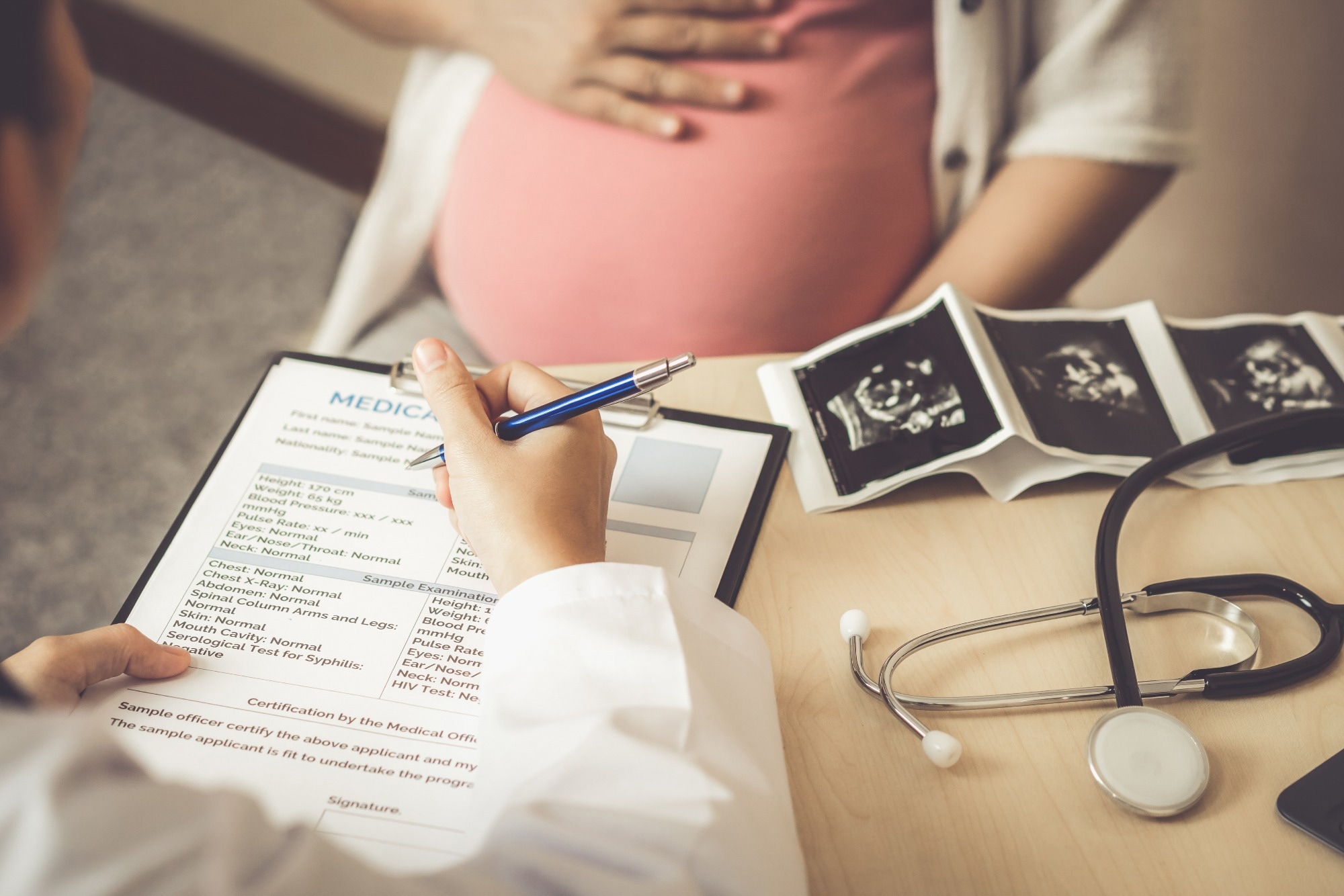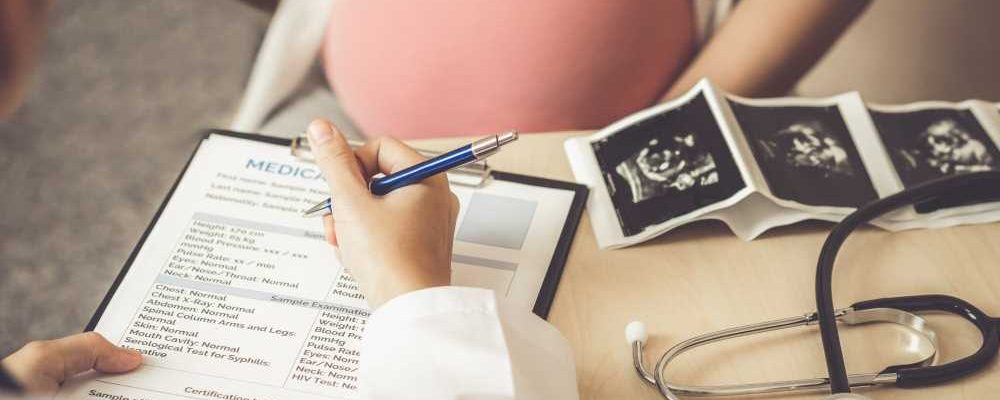Maternal metabolic conditions linked to children's neurodevelopmental risks, study shows
In a recent study published in BMC Medicine, researchers quantified the extent to which obstetric and neonatal factors mediated the relationship between three maternal metabolic conditions, pregestational diabetes mellitus (PGDM), gestational diabetes (GDM), obesity, and neurodevelopmental conditions (NDCs) in children.

These conditions included autism, intellectual disability (ID), and attention-deficit/hyperactivity disorder (ADHD).
Background
Worldwide, cases of maternal PGDM, GDM, and obesity have increased in the past few decades, and concomitantly, the prevalence of different types of NDCs, especially ADHD and autism among children. However, understanding their etiologies is lacking, and strategies for their treatment and prevention are in the early developmental stages.
Prior studies have shown that children exposed to aberrant maternal metabolic conditions in utero are at an increased risk of developing NDCs wholly or partially due to shared genetic liabilities. However, other mechanisms are also likely to be at play.
Thus, evaluating how various obstetric and neonatal complications mediate the relationship between maternal metabolic states and children's NDCs would be insightful. In addition, it would be insightful to assess how the time of exposure to PGDM, GDM, and obesity influences the fetal brain development processes, which follow a sequential pattern naturally.
About the study
In the present study, researchers used data from Psychiatry Sweden, a Swedish register investigating psychiatric disorders, to identify children born between January 1, 1987, and December 31, 2010. The final analytical sample comprised 2,352,969 children born to 1,299,692 mothers, and their follow-up continued till December 31, 2016.
The team used the International Classification of Diseases (ICD) 9th and 10th versions for NDC identification in the Psychiatry Sweden cohort. Additionally, they measured maternal adiposity around weeks 9–10 of gestation. Nearly 75% of children had maternal body mass index (BMI) data, and BMI ≥ 25 kg/m2 indicated maternal obesity.
The researchers identified potential mediators based on previous research and examined whether these influenced the relationship between maternal obesity and NDCs in children. Notably, these complications, e.g., preeclampsia and eclampsia, placental disorders, and gestational infections, arose during pregnancy, at the time of childbirth, or during the neonatal period.
The researchers also incorporated several potential confounders in their analysis, including children's sex, birth year, maternal age and birth country, psychiatric history, birth order, and household income at childbirth, to name a few.
They compared the differences in proportions and means, using a chi-squared test and analysis of variance, respectively, between children whose mothers were exposed to PGDM, GDM, or obesity versus those whose mothers were not.
Further, the researchers applied parametric regression models under a counterfactual framework for single mediation analyses estimating the effects of diabetes and elevated BMI on NDCs through individual mediators.
They used a weighting-based method for multiple mediation analyses to estimate the standard errors (SEs) for all mediation effect estimates using bootstrap iterations. Finally, they performed several sensitivity analyses to examine the potential biases in the results.
Results
The study results suggested that the association of maternal PGDM with obstetric and neonatal complications, such as preeclampsia and eclampsia, preterm birth, and neonatal asphyxia, were more significant compared to maternal GDM and obesity.
Moreover, the joint mediating effects of complications were more relevant to the neonatal period than during pregnancy and childbirth, especially in the associations between PGDM and NDCs, likely because the fetal brain was more susceptible to environmental influences during this time.
Furthermore, mediating effects of obstetric and neonatal complications in the relationship between maternal obesity and risk of NDCs in children were significant, albeit smaller in magnitude, specifically, 5% or less for individuals and less than 10% for all complications combined.
Conclusions
Management of neonatal complications, especially pregnancy hypertensive diseases, preterm birth, neonatal asphyxia, and hematological comorbidities, could potentially mitigate the risk of NDCs in children, especially in the context of PGDM.
Together, these mediated over 10% of the observed relationships between PGDM and specific NDCs in children, e.g., neonatal asphyxia and hematological comorbidities mediated effects for ID.
It is also important to manage modest mediating effects of complications in the relationships between maternal GDM and obesity and NDCs in children.
Moreover, vulnerable infants of mothers exposed to PGDM could be protected using timely interventions, such as iron (Fe) supplementation, within the first month after birth. Furthermore, these neonates should receive specialized monitoring and comprehensive care to reduce the risks for NDCs.
Overall, the study data underscores the importance of addressing primary metabolic factors in expecting females alongside managing all complications arising during pregnancy, at the time of childbirth, or during the neonatal period.
- Chen S, Wang X, Lee BK, et al. (2023). Associations between maternal metabolic conditions and neurodevelopmental conditions in offspring: the mediating effects of obstetric and neonatal complications. BMC Med, 21, 422. doi: 10.1186/s12916-023-03116-x. https://bmcmedicine.biomedcentral.com/articles/10.1186/s12916-023-03116-x#
Posted in: Child Health News | Medical Research News | Medical Condition News | Women's Health News
Tags: Autism, Body Mass Index, Brain, Childbirth, Children, Diabetes, Diabetes Mellitus, Disability, Doctor, Eclampsia, Genetic, Gestational Diabetes, Hyperactivity, In Utero, International Classification of Diseases, Medicine, Obesity, Pregnancy, Psychiatry, Research

Written by
Neha Mathur
Neha is a digital marketing professional based in Gurugram, India. She has a Master’s degree from the University of Rajasthan with a specialization in Biotechnology in 2008. She has experience in pre-clinical research as part of her research project in The Department of Toxicology at the prestigious Central Drug Research Institute (CDRI), Lucknow, India. She also holds a certification in C++ programming.
